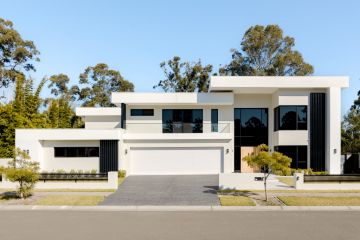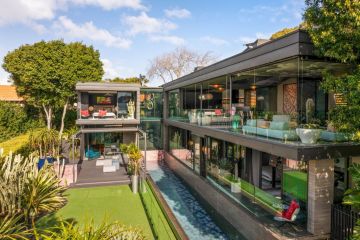Is your house worth more than you think? Experts reveal the features buyers are looking for this year in Sydney, Melbourne and Brisbane
As the property market cools in Sydney, and remains flat in Brisbane, those looking to sell their properties this year might be feeling nervous.
Meanwhile in Melbourne, soaring prices may have homeowners wondering whether they are sitting on a goldmine.
Some properties could hold more appeal than their owners realise, so what are buyers looking for across the eastern states?
Downsizers drive demand in Sydney
Anna Porter from Suburbanite said baby boomers looking to downsize were creating a huge demand for villas, along with single-level dwellings and houses on compact blocks.
“Villas, and to some extent townhouses, with a good community feel around them – there’s absolutely not enough of them,” she said. “Especially in an area with a lot of lifestyle amenities.”
“We’re seeing a really nice three-bedroom villa selling for exactly the same amount as an older house.”
Pete Wargent, from AllenWargent Residential Property Buying Advisors, said the Sydney market had softened a lot in the last year, but said downsizers would drive future growth.
“There are so many boomers coming up for retirement who are sitting on houses much bigger than they need,” he said. “It’s probably one to watch for the next few years.”
 Downsizers are seeking villas with a strong sense of community. Photo: Supplied
Downsizers are seeking villas with a strong sense of community. Photo: Supplied
Ms Porter said houses with granny flats were performing well, but dwellings needed to be well laid out and in desirable areas.
“Again, it’s the downsizing population – families looking to have Mum and Dad living with them. Or it adds extra income, especially for first-home buyers.”
As buyers become more renovation-savvy, the disparity between renovated and unrenovated properties is shrinking. Sellers don’t necessarily have to renovate an older property before putting it on the market.
Renovators were keen on level blocks to keep the cost of extensions down, and anything with development potential, such as adding a granny flat, would be favourable.
- Related: Prepare a rundown home for sale for less than $5000
- Related: How to add value with a kitchen renovation
- Related: Should you rent or sell your previous home?
Affordability the key factor in Melbourne
Empower Wealth’s Bryce Holdaway said low stock levels in Melbourne meant buyers were seeking affordability.
“People are thinking it’s really expensive to get in,” he said. As a consequence, properties that buyers could improve had appeal.
“People can get in a lower price point. Over time, they can add value,” he said.
He had also seen a lot of interest in Geelong and Ballarat, saying buyers had access to good schools and local employment options.
 New buyers are drawn to affordable properties with room for improvement. Photo: Supplied
New buyers are drawn to affordable properties with room for improvement. Photo: Supplied
Closer to the Melbourne CBD, houses with development opportunities – such as a family home that could be turned into two or three townhouses – were in demand.
“As [the market] gets bit more subdued, investors are going to want to look for ways to create their own momentum,” he said.
Mr Holdaway said affordable “old school flats” in tree-lined streets next to period homes in the north and north west of the city were in demand, as they were scarcer than in the south.
Buyer’s agent and CEO of Property Mavens Miriam Sandkuhler said there was a lot of interest in Melbourne’s inner-west, driven by first-home buyers looking for homes under $750,000.
“The equivalent of the same distance east, you’d be looking at several million dollars,” she said.
Ms Sandkuhler thought downsizers were the main competition for first-home buyers, rather than foreign buyers.
“CUBs – Cashed Up Boomers – are vying for units, and houses on smaller blocks,” she said. “Not so much townhouses – young people will go for them, but the oldies can’t handle the stairs,” she said, adding well-situated single-story villas were in high demand.
Brisbane buyers favour move-in ready properties
Josh Coleman, from JLL in Brisbane, said he was seeing a shift towards an owner-occupier mentality, rather than a cookie-cutter investment approach.
“Land size is a really important component,” he said, saying that it was a key factor that brought buyers value. He’d seen a shift towards slightly larger middle-ring properties near schools and transport, as they appealed to a family demographic.
“For investors, there’s a preference towards family tenants. They’re more stable, and have a better capacity to pay rent,” he said. “And those bigger properties have more scope for developers to expand.”
The turn-key nature of the property was also proving to be a factor across the market, from prestige properties to smaller family homes.
“You might find a property that’s not quite perfect has quite a price differential to one that’s ready to go,” he said, explaining that homes with the landscaping and painting done held real appeal to time-poor buyers.
He added that Brisbane’s traditional housing stock lends itself towards extensions. “Character dwellings are very desirable, and expandability is very desirable,” he said.
 Move-in ready Queenslanders appeal to Sydneysiders heading north. Photo: Supplied
Move-in ready Queenslanders appeal to Sydneysiders heading north. Photo: Supplied
Buyers were also becoming less tolerant of awkward floor plans, with smaller, efficient homes proving more desirable than bigger properties, particularly at the top end of the market and with Baby Boomers looking to downsize.
Mr Coleman said older swimming pools didn’t appeal, but smaller, modern pools – about three metres by five metres – were popular, especially for families with small children.
Mr Wargent said Brisbane in particular was seeing a lot of people moving up from Sydney and using their equity to buy more affordable family homes.
“From a seller’s point of view, you’re really trying to snag a Sydney buyer,” he said. “Take a suburb like Bardon. It’s got an elevated position, there are some beautiful Queenslanders up there. Coorparoo is another one.”
In the strata market, buyers were being cautious around units and townhouses, but were looking for features that made those properties unique, such as architectural style or generous size.
We recommend
We thought you might like
States
Capital Cities
Capital Cities - Rentals
Popular Areas
Allhomes
More







